How to Choose the Best Holster and Carry Style for Your Body Type
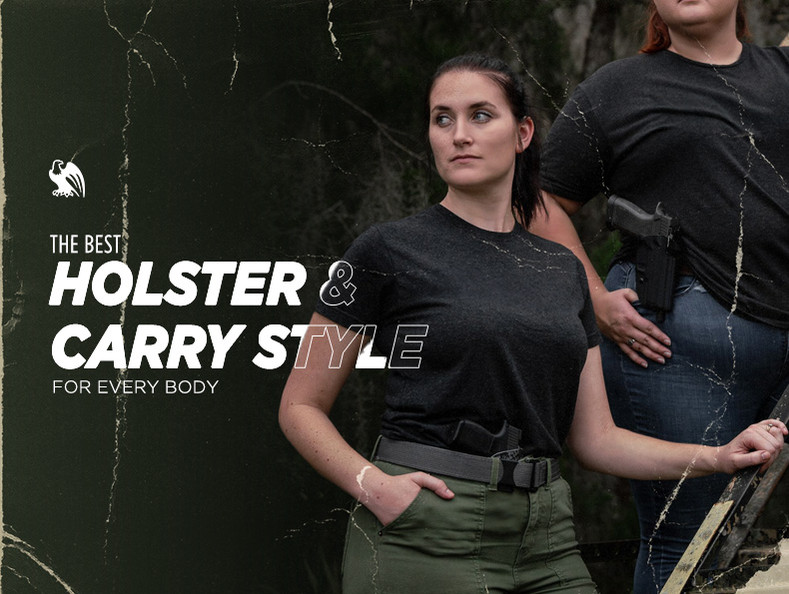
Concealed carry is a highly personalized experience. Everything from the gun you choose, to the holster you wear, to the position you carry in is influenced by your lifestyle, preferences, and, most importantly, your body type.
Body type has a huge impact on which concealed carry gear will work for you. Choose wrong, and you may deal with printing, difficulty drawing, and discomfort. Choose right, and you’ll have a seamless carry experience that keeps you prepared and in control.
But how does body type influence how you should build a carry system? And which gear and methods are right for you?
At the end of the day, it may take some trial and error to find the perfect setup for your body and daily routine. That said, we can help point you in the right direction with some tips and recommendations for different physiques.
Concealed Carry Tips for Thin Body Types
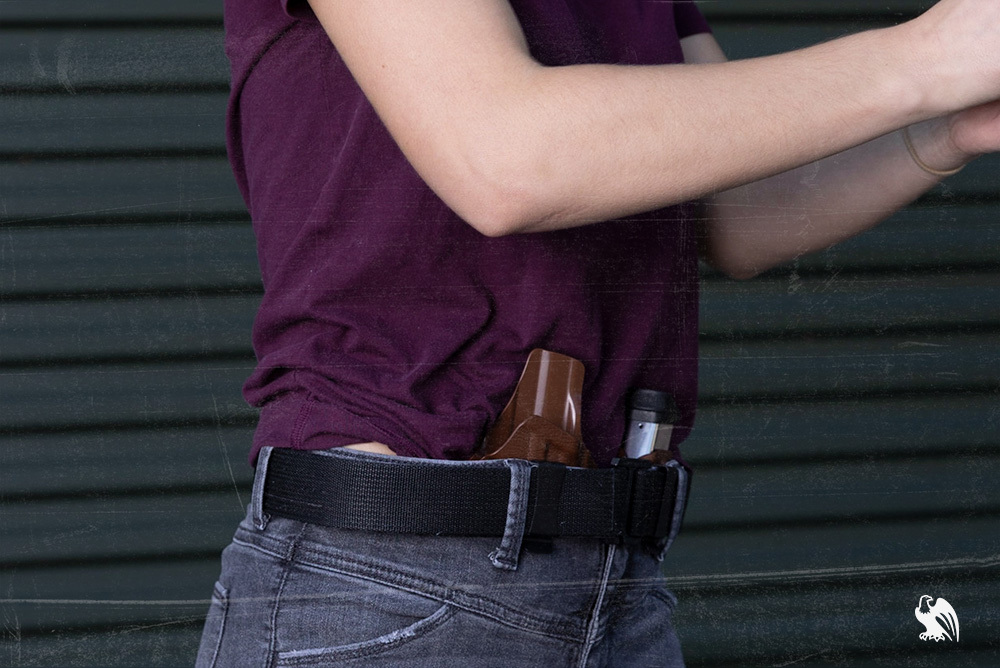
If you have a petite or slim build, we don’t have to tell you that certain pistols and holsters create way too much bulk on your waistline. That being said, with the right setup, you’ll have an easier (and more comfortable) time than most keeping your gun concealed under even a simple T-shirt.
Carry Positions For Skinny People
As a thin person, the odds are good that you can wear a holster in most positions along the waistline. With a little trial and error and an adjustable holster, you should be able to make nearly anything work (lucky you!).
That being said, appendix carry is likely going to be your best bet. In fact, there’s a great chance your gun will virtually disappear under the drape of your shirt anywhere in the 12-2 o’clock region (or 10-12 for left-handed shooters). The 4-5 o’clock (or 7-8 o’clock) position also works well for some skinny people, but not for others, depending on your specific build and the size of your gun.
Strong side is the only area that will almost certainly give you trouble. Since you don’t have as much curvature in your torso, this position could cause the grip of the gun to stick out too much, unless you have a tiny pistol or an adequate cover garment.
Best Holsters For Small Frames
When choosing a holster as a skinny person, you should look for something with a wide range of adjustability and the smallest profile possible. Here are our top recommendations for holsters for slim builds:
The LightTuck® is a versatile holster with maximum adjustability. This IWB holster works great for any body type and carry position, thanks to its low-profile shell and wide range of adjustability, including three levels of ride height and up to 30 degrees of forward and reverse cant.
Another highly adjustable holster that can be carried in any position along the waistline is the RapidTuck®. This hybrid IWB holster has the smallest leather backing of our hybrid holsters, making it a good option for smaller frames.
For appendix carry, the SideTuck® is an advanced IWB holster with an attached mag carrier. It has two spring steel clips and two holster claws, which keep the holster close to the body for reduced printing.
If you’re looking to carry OWB, the LightDraw® paired with our premium pancake clips is a solid choice for small frames. These clips will draw the holster even closer to your body than the LightDraw’s® standard clips, ensuring this all-Kydex holster is as snug as possible.
Choosing a CCW for Thin Builds
As a skinny carrier, the size of your gun is going to be a major factor in how easy it is to conceal. The reality is that with your slim profile, the smaller the gun, the easier it will be to hide.
As a general rule, anything in the compact pistol family or smaller should easily disappear under street clothes. You can, of course, carry a larger pistol, but you should be prepared to wear a light jacket, flannel, or loose T-shirt to keep it from printing.
If you’re not sure which pistol is right for you, we’ve got a ton of gun comparisons and recommendations over on our blog to help you narrow it down!
Concealed Carry Tips for the Average Build
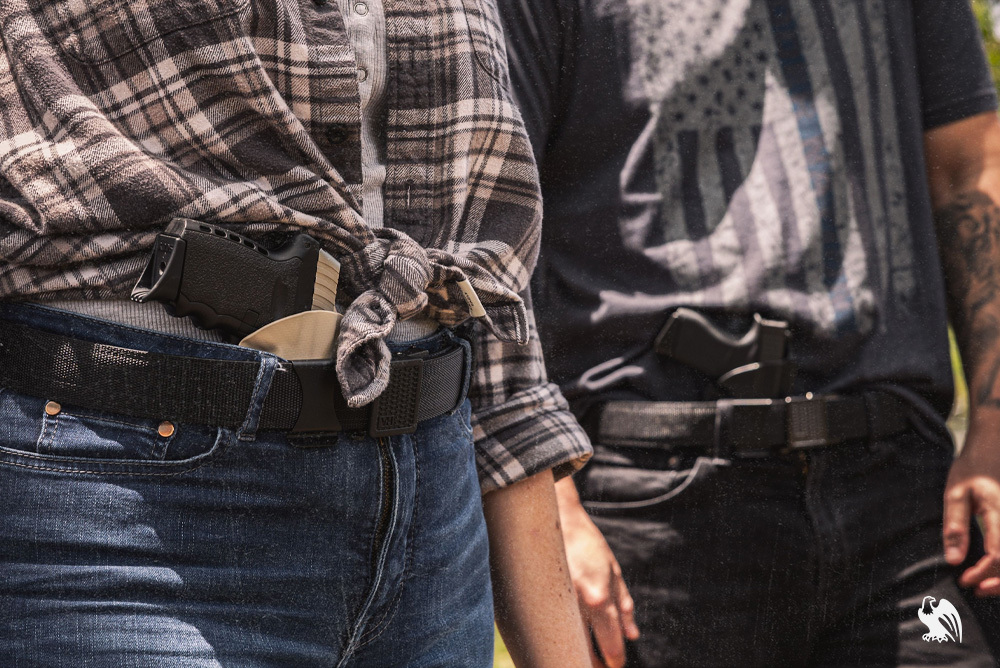
If you have an average build, you’re in luck. You can carry nearly any gun in nearly any position with little to no issue. Why are you even here?! We’re kidding, of course, because your ability to carry any way anyhow is actually a bit of a double-edged sword. While you have endless possibilities, you also have endless possibilities. Which is to say that you have so many options, you may have trouble narrowing it down to what works best for you. But don’t worry. We’ve got some tips for finding the best setup for your individual needs.
Best Carry Positions for the Average Build
Because someone with an average build can get away with carrying in pretty much any position, it’s up to you to narrow it down to which one is best for your specific needs. Pocket carry, appendix, strong side, and kidney, the sky is the limit for people like you!
The only real way to determine which position works best for you is to try one out and see how it goes. Choose a position that makes sense for you based on your lifestyle, and give it a week or two to determine whether you like it or if you want to try something else.
Our Ultimate Guide to Concealed Carry can help you figure out which positions may be most compatible for you based on things like your daily activities, mobility, and clothing style.
Best Holsters for Average-Sized People
Just like you can carry in most positions, you can also wear most holsters without running into any issues. So, finding the right one for you will require you to think about your lifestyle and preferences. We’ll help you break it down:
If you’re looking for a do-it-all holster that will allow you to mix up your carry position, the LightTuck® is a great choice. It’s our most versatile option and features three levels of adjustable ride height and up to 30 degrees of forward and reverse cant. The RapidTuck® is also highly adjustable and can be worn in any position. Plus, it has a leather backing for added comfort.
The ProTuck® and ComfortTuck® are both hybrid IWB holsters that are designed to be ultra-comfortable. These holsters are meant to be worn in the 3-5 o’clock (or 7-9 o’clock if you’re left-handed) positions, and easily mold to your body for comfort and concealment.
If you plan to carry strictly in the appendix position, the SideTuck® is an advanced IWB holster with an attached mag carrier. It also has two holster claws to draw your rig closer to your body for even greater concealment.
If you plan to carry OWB, you can narrow it down depending on which feature is most important to you: comfort, stability, or ease of use. Although all three of our OWB holsters offer these traits, they each shine in different ways. The Quick Draw is our only hybrid OWB holster, making it the most comfortable option available. The LightDraw® has adjustable retention and two points of contact, making it incredibly secure on the waistline. Finally, the ProDraw® is equipped with a paddle-style clip, allowing you to put it on and take it off without removing your belt. It’s also our most adjustable OWB holster.
If you’re interested in pocket carry, the Pocket Locker® is an excellent choice. With adjustable retention and multiple upgrades like a curved shell and thumb tab for easier drawing, this is the most advanced pocket holster on the market.
Choosing a CCW for Average Builds
This is perhaps the easiest part of building a concealed carry system with an average body type. You should be able to carry any size pistol you want, so it really all comes down to what you prefer.
Compact, subcompact, and micro-compact guns are always the easiest to conceal on any body shape, but you should also have no trouble concealing a full-sized pistol with an adjustable holster. So, you’ll need to consider other factors such as weight, grip, and maneuverability to decide which gun you want to carry.
If you’re interested in some recommendations, our blog is chock-full of gun comparisons and guides to help you pick one!
Concealed Carry Tips for Larger Builds
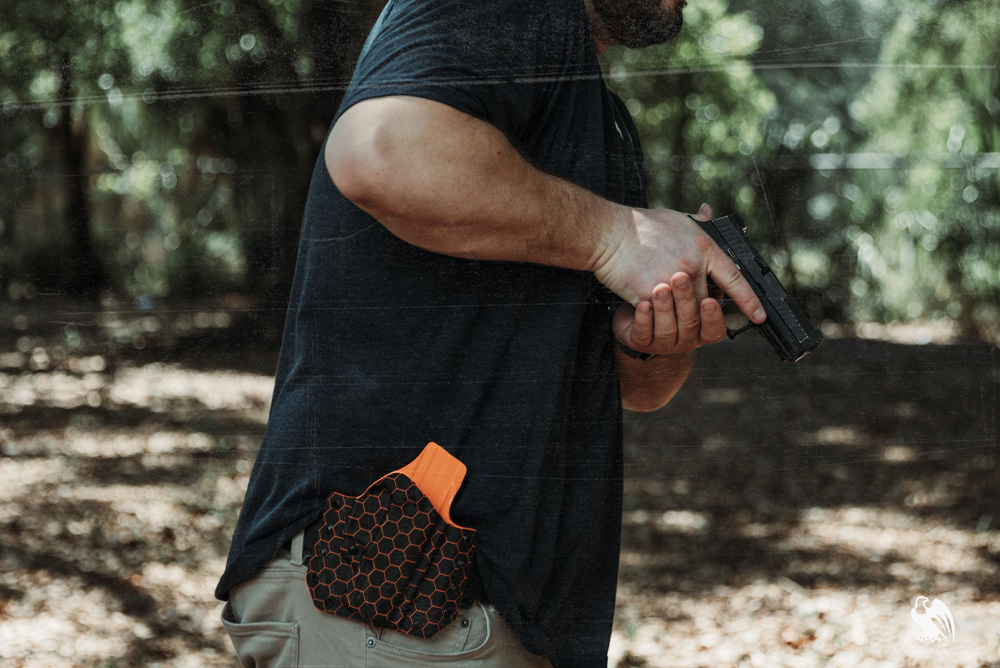
The unfortunate reality is that bigger folks are going to have a harder time finding a carry system that is both comfortable and well-concealed. But the bright spot is that you’re not alone. There are countless resources and tips at your disposal to help you choose the right gear and strategy.
Best Carry Positions for Larger Body Types
Choosing the right carry position makes a huge difference when you have a huskier build. As a general rule, choosing a position on either side of your “love handles” in the 2 or 5 o’clock region (10 or 7 o’clock for lefties) will make concealment fairly easy. The 2 or 10 o’clock region should work particularly well for you, as this places your rig between your love handles and stomach, which creates a natural hiding place.
Appendix carry can also work well as long as you use the “300th Parallel” strategy, which involves readjusting your holster when you sit and stand. A holster specifically designed for appendix carry and a looser shirt will help make this work!
Although strong side carry will likely be one of the most comfortable positions for you, it is also one of the most difficult to conceal, even for the skinniest people. For that reason, we don’t recommend this position for bigger people unless you plan to wear a cover garment.
Finally, pocket carry is a method that actually works better the bigger you are. Not only is this a really comfortable way to carry, but it’s very easy to conceal when you have looser pants and spacious pockets.
Best Holsters for Larger Body Types
When choosing a holster, you’ll want to look for something with a wider footprint for even weight distribution. This will keep everything nice and secure as well as increase comfort. Adjustable features are another important thing to look for, as they will allow you to tweak the position of your holster until you find that “sweet spot” for comfort and concealment. Here are our recommendations:
The LightTuck® is our most versatile holster and works well for every body type. It can be carried in any position and has three levels of adjustable ride height and up to 30 degrees of forward and reverse cant. The RapidTuck® is another great holster for bigger frames, as it combines the versatility of the LightTuck® with a leather backing for increased comfort.
If you’re looking for maximum comfort, though, holsters with two clips like the SideTuck® (our most advanced AIWB holster), ProTuck®, and hybrid ComfortTuck® do an excellent job of distributing the weight of your gun and keeping everything secure.
Many larger folks also find that outside the waistband holsters are more comfortable than trying to squeeze a holster inside their waistband. If you’re interested in trying OWB carry, the Quick Draw is a hybrid holster with a wide leather backing and two loops to thread your belt through, making it the best option for larger body types.
If you want to give pocket carry a try, the Pocket Locker® holster is by far the best choice. Unlike most pocket holsters on the market, this one features adjustable retention, making it safer and more secure than most. It also offers multiple upgrades, including a curved shell and a thumb tab for better concealment and an easier draw.
Choosing a CCW for Larger Builds
One of the biggest advantages you have when it comes to concealed carry is that having a larger frame makes it easier to carry a variety of weapons. Unlike your skinny counterparts, you can get away with carrying modded-out full-sized pistols without anyone noticing a thing.
That said, there are a few features you should look for in a handgun. You’ll want to choose a pistol with a larger grip for easier handling, a shorter barrel to prevent it from jabbing into you, and a lighter polymer frame so you’re not carrying unnecessary excess weight.
If you’re interested in reading more about how to make concealed carry work for large builds, you can check out our in-depth guide on building a carry system for big guys here.
Concealed Carry Tips for Curvy Bodies
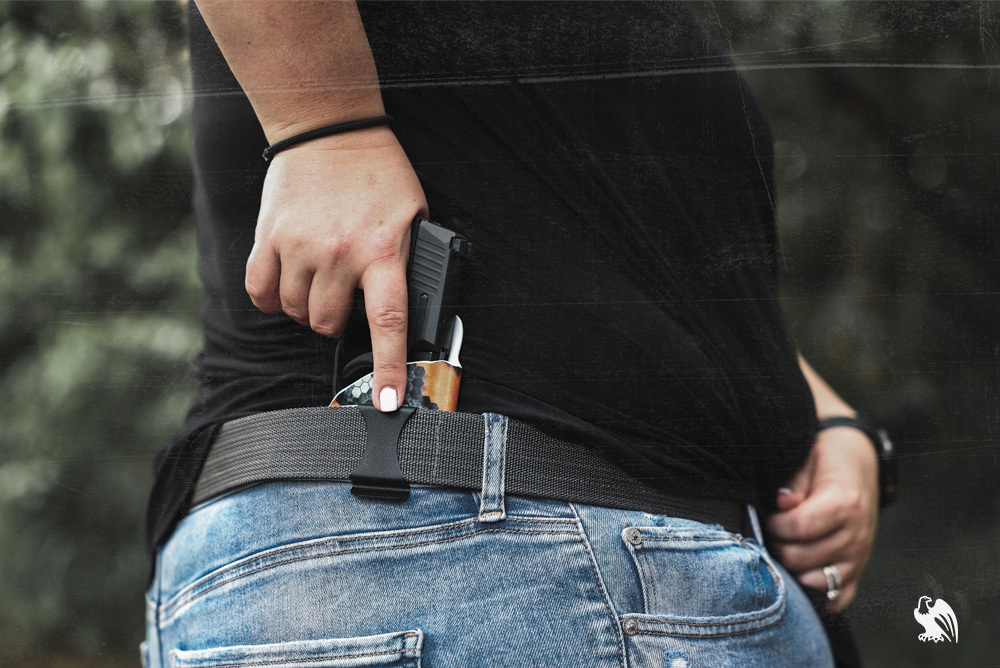
It’s no secret that women are often built very differently from men. Whether you have a slim, average, or larger build, if you have defined curves, you may find yourself facing some unique challenges when it comes to concealed carry. Fortunately, there are some techniques you can use to carry with confidence.
Best Carry Positions for Curvy Frames
The good news is that curves actually offer an advantage when it comes to concealing a firearm, but only if you wear it in the right position along the waistline.
Wider hips can pose a real challenge when it comes to waistband carry. It can be incredibly difficult, if not impossible, to wear a pistol in the strong side position without it protruding. Unless you’re a fan of wearing an oversized hoodie every single day, this just won’t work.
While some people with curves have no trouble carrying in the 4-5 o’clock position, most find that appendix is the best spot for this body type. It may also be helpful to wear your holster higher on your waist using a bellyband or high-waisted pants so that it disappears into that narrow spot between your hips and chest.
Best Holsters for Curvy Bodies
If you’ve got curves, you’ll want to look for a holster that naturally contours to them. A holster with a curved shell and/or adjustable features will work with your body and not against it. Holsters with a wide footprint probably won’t be the best option for you, as they’ll have a harder time wrapping around your hips. Here are our top holster recommendations for curvy body types:
Once again, the LightTuck® is a versatile IWB holster that works great for any body type and carry position. Its low-profile shell, three levels of adjustable ride height, and up to 30 degrees of forward and reverse cant make it ideal for those with curves who need to try various angles.
The ProTuck® is another awesome choice for those with curves. This IWB holster has a curved shell that naturally conforms to the body as well as two leather-backed clips for added flexibility and stability. Designed to be worn in the 3-5 o’clock (or 7-9 o’clock) position, its adjustable ride height and cant allow you to further fine-tune its position to find that “sweet spot” of comfort and concealment.
For those who always carry in the appendix position, the SideTuck® is an advanced IWB holster designed for this form of carry. It features an attached mag carrier, two spring steel clips, and two concealment claws that keep it close to the body.
If you plan to carry outside the waistband, the ProDraw® is an excellent holster for curvy folks. This holster features 15 degrees forward and reverse cant and the same low-profile shell as the LightTuck®, making it easy to wear in a multitude of positions. It has a comfortable, curved paddle-style clip that sits easily against the body and makes it easy to put on and take off without removing your belt.
Choosing a CCW That’s Curve-Compatible
Choosing the right pistol will go a long way when concealed carrying with a curvy build. Fortunately, you’re in luck. Your frame will give you quite a bit of flexibility depending on your position of choice.
If you are planning to carry anywhere in the 3-5 o’clock position (7-9 o’clock for lefties), you’ll likely find that anything larger than a subcompact pistol will be a bit of a challenge. Because this positions the gun on the outside of your hip, which is likely the widest part of your body, any sized gun will stick out, so the smaller the better in this area.
For appendix or bellyband carry, you will have a lot more room to work, depending on how long your torso is. If you have a longer torso, you may find that you can conceal even a full-sized gun with zero issues. With a short or medium torso, a compact pistol will probably work great for you.
If you’re not sure where to start, take a look at our recommendations for the best handguns for women and narrow it down based on your specific needs and preferences.
Big or Small, Dressing for Concealed Carry is Crucial
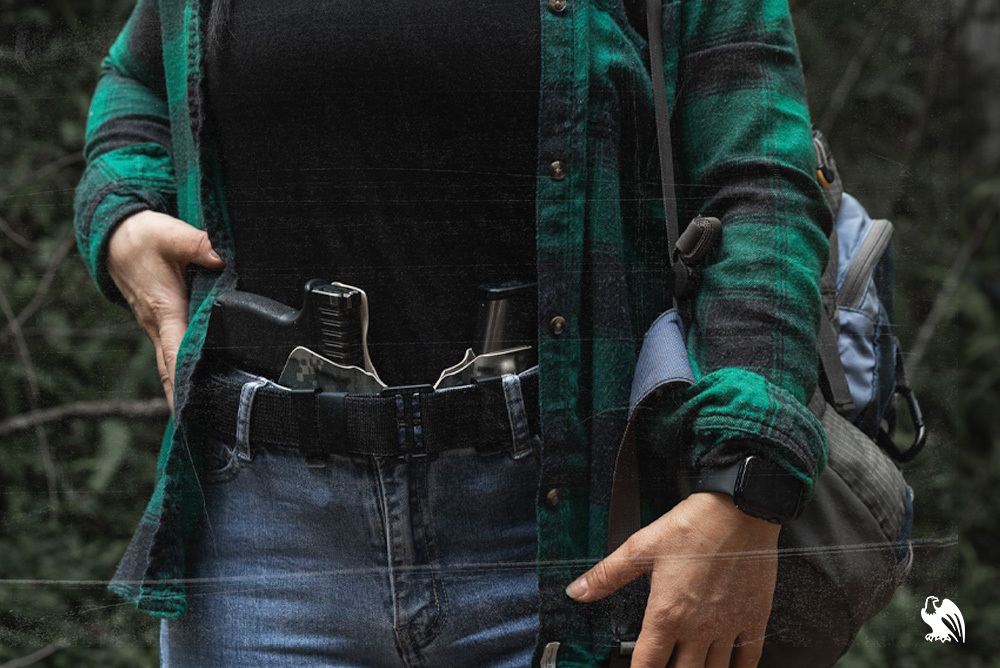
No matter what your size, there are some important factors to consider when dressing for concealed carry that will go a long way in keeping you both comfortable and print-free.
The first is a sturdy gun belt. Your belt is the foundation of your carry system, and without adequate support, your gun and holster will sag throughout the day. Not only is this uncomfortable, but it can result in your pistol shifting so that it prints through your clothes or becomes difficult to access. Investing in a sturdy gun belt, which is more rigid and durable than an average belt, is one of the best ways to set yourself up for success during everyday carry.
Ensuring the pants you wear have adequate belt loops and are sized correctly can also go a long way in keeping your pistol stable and hidden while carrying IWB. When choosing pants for concealed carry, the general rule of thumb is to wear one size up to ensure there’s enough room for your gun and holster.
Finally, although you don’t need to wear an oversized baggy shirt if you have a quality holster, it is helpful to choose one that’s loose enough around your waist to accommodate your gun. Thicker materials, dark colors, and patterns are also helpful if you’re struggling with printing.
To read more about what you should wear during EDC, check out our in-depth guide to dressing for concealed carry. If you’re looking for women-specific tips on dressing for concealed carry, we’ve got a guide for that, too!
Summary
Your carry system should be as unique as you. The best gun, holster, and carry position are all strongly influenced by your body type, and learning to work with it, not against it, will ensure you have a comfortable, print-free experience.
At Vedder Holsters, we offer a variety of holsters that can be customized to your gun and personal preferences. If you’re looking to upgrade your carry system, visit our Holsters by Gun Model page to find Kydex holsters tailored to your firearm. Plus, explore our Resources Page for gear recommendations, concealed carry guides, and exclusive content to elevate your carry system.
